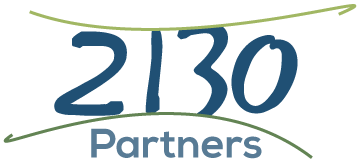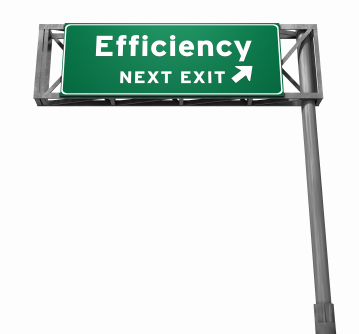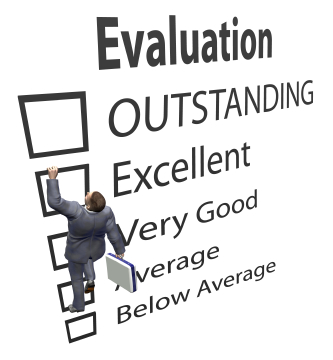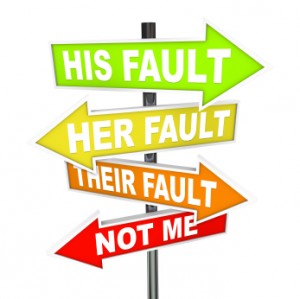 “The degree to which you are willing to be open and therefore vulnerable strongly influences the degree to which others feel connected to you, are inspired by you, and are willing to trust you and your leadership.”
When I look back and reflect on my experiences with others’ leadership, a high point occurred while I was on an Alaskan vacation cruise with my oldest daughter last year. I was particularly impressed by the leadership displayed by many crew members and especially the Captain. In addition to having extraordinary knowledge about operating large motor vessels around the world, he had to have broad expertise in business including; operations, health and safety, customer service, motivating employees from several different nations, assuring environmentally friendly practices, international law, and much more to be effective in his job.
“The degree to which you are willing to be open and therefore vulnerable strongly influences the degree to which others feel connected to you, are inspired by you, and are willing to trust you and your leadership.”
When I look back and reflect on my experiences with others’ leadership, a high point occurred while I was on an Alaskan vacation cruise with my oldest daughter last year. I was particularly impressed by the leadership displayed by many crew members and especially the Captain. In addition to having extraordinary knowledge about operating large motor vessels around the world, he had to have broad expertise in business including; operations, health and safety, customer service, motivating employees from several different nations, assuring environmentally friendly practices, international law, and much more to be effective in his job.
What really struck me most about this very busy Captain was his accessibility. With more than 2,000 passengers aboard, it was beyond impossible for everyone to dine at the Captain’s table. To solve that problem, he made a point of making himself available in creative ways multiple times throughout the trip. One of his most effective was a cooking demonstration he conducted on making Dutch pancakes.
He created openness or accessibility with light-hearted humor and by sharing part of his life with us as follows:
- He talked us through preparing and serving a dish his mom taught him how to make as a child including samples for each of us. It was surprising and fascinating not only that he could cook, but that he was willing to get up on stage in front of passengers and show us.
- He conducted the demonstration with the assistance of one of his staff who served as his “straight man” to keep a lively banter going. While the Captain took us through the food preparation, his assistant facilitated an “open Q&A” between him and the audience that included questions about his life on land during his time off, his relationships, and even his dog.
People left this very successful event with a sense of personal connection with the Captain which, of course, carried over to the crew and the cruise line itself. The experience got me to thinking more broadly about other times and ways that I have seen leaders share their humanity and what a powerful leadership move it is.
How available are you to your employees? Would you ever do something as accessible and personal as a cooking demonstration with a live no-holds-barred Q&A?
There is immense demonstrable value in allowing yourself to be seen as human. It creates greater trust and connection which calls forth increased risk taking, creativity, and collaboration.
Why not think of a creative way to let your team get to know you better? Demonstrate something you love – tying flies for fishing, building model airplanes, grilling, cooking or whatever? It doesn’t have to take a lot of your time and it will be one of the ways that you grow your effectiveness as a leader.




 How bold are you willing to be setting your goals? If you are completely certain you can make the goals are you stretching yourself enough? Focus on designing the most catalytic, highly leveraged action steps you can. By “catalytic” we mean that your actions produce the intended results without your being used up in the process. By “highly leveraged,” we mean you produce very big results with minimal resources.
How bold are you willing to be setting your goals? If you are completely certain you can make the goals are you stretching yourself enough? Focus on designing the most catalytic, highly leveraged action steps you can. By “catalytic” we mean that your actions produce the intended results without your being used up in the process. By “highly leveraged,” we mean you produce very big results with minimal resources.

 In the process of growing up and becoming a successful leader, you most likely put together a set of well-developed values, beliefs, experiences, and capacities. You have probably done well at suppressing your emotions and demonstrating your rational thinking. Being successful means your mix has served you well; you have been rewarded, “bonused,” and encouraged along the way. You have probably learned to rely on the way you interact, solve problems, and produce results to the point where the basis of your thinking, (your “paradigm”), is now instant, automatic, and unexamined.
To paraphrase the
In the process of growing up and becoming a successful leader, you most likely put together a set of well-developed values, beliefs, experiences, and capacities. You have probably done well at suppressing your emotions and demonstrating your rational thinking. Being successful means your mix has served you well; you have been rewarded, “bonused,” and encouraged along the way. You have probably learned to rely on the way you interact, solve problems, and produce results to the point where the basis of your thinking, (your “paradigm”), is now instant, automatic, and unexamined.
To paraphrase the  leadership,” and that means the Peter Principle is “in effect.” To continue to lead successfully, you will be required to think in new ways and benefit from the thoughts and perspectives of others. In other words, cherished self-reliance becomes obsolete. Collaboration, inclusion, openness, the ability to continue learning, respect of others’ skills, expecting others to contribute - these are the traits that are critical to develop.
leadership,” and that means the Peter Principle is “in effect.” To continue to lead successfully, you will be required to think in new ways and benefit from the thoughts and perspectives of others. In other words, cherished self-reliance becomes obsolete. Collaboration, inclusion, openness, the ability to continue learning, respect of others’ skills, expecting others to contribute - these are the traits that are critical to develop. (This post is an edited version of an article by Suzanne Mayo Frindt. To get the complete text
(This post is an edited version of an article by Suzanne Mayo Frindt. To get the complete text  How Can We Develop a Learning Culture?
There are many books and articles about learning organizations including work by Senge
How Can We Develop a Learning Culture?
There are many books and articles about learning organizations including work by Senge
 Now ask “what’s missing today from my vision today that would be the most valuable thing I could put my attention on?” “What, if I/we got to work on it would give us the greatest leverage in fulfilling the vision?” By leverage we mean getting the greatest result for the least effort and investment of resources. Pick one, and no more than three, activities and build time into your calendar for them. Share your new focus with others so that they ask you how you are doing. They may even look to see how they can support you! That’s real accountability – holding yourself accountable in a public way through your declarations.
Now ask “what’s missing today from my vision today that would be the most valuable thing I could put my attention on?” “What, if I/we got to work on it would give us the greatest leverage in fulfilling the vision?” By leverage we mean getting the greatest result for the least effort and investment of resources. Pick one, and no more than three, activities and build time into your calendar for them. Share your new focus with others so that they ask you how you are doing. They may even look to see how they can support you! That’s real accountability – holding yourself accountable in a public way through your declarations. Awhile ago I was forwarded an email written by Shama Kabani. [She runs an
Awhile ago I was forwarded an email written by Shama Kabani. [She runs an  ing CEO membership organization and I have worked with them for more than 16 years. I can say the 5 insights offered by Kinsey below are very consistent with my experience of the CEO population. Here they are with notes from me included.
ing CEO membership organization and I have worked with them for more than 16 years. I can say the 5 insights offered by Kinsey below are very consistent with my experience of the CEO population. Here they are with notes from me included. Being powerful in translating intentions into reality and sustaining them requires presence and adaptability in the face of life’s circumstances – circumstances that can change every moment. Where can we turn for tools to support ourselves?
The United States military has long taught our special ops teams and fighter pilots a thought process called the OODA Loop. These teams function in relatively small units who have large assignments with very limited time and resources. They train incessantly and plan their missions in incredible detail. Yet, no plan survives its collision with reality and conditions in the field often differ from those on the planning table.
Being powerful in translating intentions into reality and sustaining them requires presence and adaptability in the face of life’s circumstances – circumstances that can change every moment. Where can we turn for tools to support ourselves?
The United States military has long taught our special ops teams and fighter pilots a thought process called the OODA Loop. These teams function in relatively small units who have large assignments with very limited time and resources. They train incessantly and plan their missions in incredible detail. Yet, no plan survives its collision with reality and conditions in the field often differ from those on the planning table.
 “If you expect performance, then make it [meaning your expectations] ’acutely clear’ so people have the opportunity to succeed.” -- Jim Moats
A very thoughtful leader, friend, and fellow
“If you expect performance, then make it [meaning your expectations] ’acutely clear’ so people have the opportunity to succeed.” -- Jim Moats
A very thoughtful leader, friend, and fellow  Being 'acutely clear,' (as Jim Moats describes), and in partnership with those around you, puts you in what we call in our book "
Being 'acutely clear,' (as Jim Moats describes), and in partnership with those around you, puts you in what we call in our book " On a recent evening in a beach bar on a quiet bay in the Grenadines where our sailboat was anchored for the night, I met a gentle soul named Alvin who was native born and raised on the island. Despite the idyllic setting, Alvin was a troubled man. On the surface, he had little education, jobs are scarce, and he is in a desperate struggle financially. For many of us, that would be enough to cause us to give up. However, Alvin's troubles ran even deeper.
Alvin said he longed for connection and conversation. He said his own people are very "contentious" with each other, leaving little- to-no room for meaningful relationships. His observation was so sincere and heartfelt that it "hooked me." I've been thinking about it ever since. How many times do I hear people say in meetings, "I disagree with that..." “You’re wrong about that…” or “You’re confused…” as if that approach was useful rather than instantly causing disconnection and the need to defend oneself.
On a recent evening in a beach bar on a quiet bay in the Grenadines where our sailboat was anchored for the night, I met a gentle soul named Alvin who was native born and raised on the island. Despite the idyllic setting, Alvin was a troubled man. On the surface, he had little education, jobs are scarce, and he is in a desperate struggle financially. For many of us, that would be enough to cause us to give up. However, Alvin's troubles ran even deeper.
Alvin said he longed for connection and conversation. He said his own people are very "contentious" with each other, leaving little- to-no room for meaningful relationships. His observation was so sincere and heartfelt that it "hooked me." I've been thinking about it ever since. How many times do I hear people say in meetings, "I disagree with that..." “You’re wrong about that…” or “You’re confused…” as if that approach was useful rather than instantly causing disconnection and the need to defend oneself.  Most of the time when consultants, coaches or other “outside interventions” are tapped by leaders of organizations it’s because there is some type of crisis or turning point. Usually “the pain” has become high and the solutions to the issues just aren’t apparent to leadership. There are various causes of business pain, but the one we are going to focus on today is a common one. It is some variation of “go fix my people.” There is often a perception issues are being caused by an individual, several individuals, a department or team.
Underneath it all, particularly within owner-entrepreneur types of environments, there is a very particular bottom line and let’s cut right to it. Owner/entrepreneurs work the way they work because they like it. It’s working for them. What “the pain” is almost always about is that the way they are working, is not creating the results they want and they don’t like it. However, the request is “go fix the other people!” Ultimately, so the owner/entrepreneur can continue with their patterns and approach without having to shift themselves. Sometimes, depending on how urgent the “pain” is, leaders will shift, but inevitably, the minute there is enough breathing room, they snap back to their previous ways. Just as inevitably, the patterns that don’t work for the business, (but work on a personal level for the leader), are back, and soon enough, the “pain” is back.
Most of the time when consultants, coaches or other “outside interventions” are tapped by leaders of organizations it’s because there is some type of crisis or turning point. Usually “the pain” has become high and the solutions to the issues just aren’t apparent to leadership. There are various causes of business pain, but the one we are going to focus on today is a common one. It is some variation of “go fix my people.” There is often a perception issues are being caused by an individual, several individuals, a department or team.
Underneath it all, particularly within owner-entrepreneur types of environments, there is a very particular bottom line and let’s cut right to it. Owner/entrepreneurs work the way they work because they like it. It’s working for them. What “the pain” is almost always about is that the way they are working, is not creating the results they want and they don’t like it. However, the request is “go fix the other people!” Ultimately, so the owner/entrepreneur can continue with their patterns and approach without having to shift themselves. Sometimes, depending on how urgent the “pain” is, leaders will shift, but inevitably, the minute there is enough breathing room, they snap back to their previous ways. Just as inevitably, the patterns that don’t work for the business, (but work on a personal level for the leader), are back, and soon enough, the “pain” is back. Change is possible and change takes work. Whether a leader changes or not, energy is being expended. It takes energy to keep patterns in place when they aren’t working and there is a state of resistance. We call that ‘friction and waste,’ a subject we address in our blog posts on Lean Thinking. It takes energy to make changes. There is a cost either way. The question is - where does a leader “pay up?”
Change is possible and change takes work. Whether a leader changes or not, energy is being expended. It takes energy to keep patterns in place when they aren’t working and there is a state of resistance. We call that ‘friction and waste,’ a subject we address in our blog posts on Lean Thinking. It takes energy to make changes. There is a cost either way. The question is - where does a leader “pay up?” If you’ve been successful at this level of work and/or are ready to take on your first effort at a Strategic Plan for your company or affiliation, we suggest using what we call our “2130 Partners Hot Wired Strategic Plan.” We call it Hot Wired because it covers many of the levels and topics of an elaborate plan and yet you can produce a decent draft in a couple of hours. The next pass can then be developed to whatever level of detail you wish. The key, however, is to get the initial draft knocked out in as short a time as you can so that you shift your paradigm about goals and actions as you develop the more detailed plans.
If you’ve been successful at this level of work and/or are ready to take on your first effort at a Strategic Plan for your company or affiliation, we suggest using what we call our “2130 Partners Hot Wired Strategic Plan.” We call it Hot Wired because it covers many of the levels and topics of an elaborate plan and yet you can produce a decent draft in a couple of hours. The next pass can then be developed to whatever level of detail you wish. The key, however, is to get the initial draft knocked out in as short a time as you can so that you shift your paradigm about goals and actions as you develop the more detailed plans.  It’s the time of year when many of us conduct annual rituals that may include everything from strategic planning sessions for business to making New Year’s resolutions or setting Bold Goals for 2011 and beyond. We’ve found any such process to be much harder to do when we haven’t completed and let go of the past. It’s very difficult, (impossible?), to really move forward when we are carting the past along with us. The process of letting go can include changing your attitude and perceptions about what the economy did to you, to digging very deep and letting go of some of the childhood stuff that shapes your life.
On the fun end of the spectrum, we have for many years put flip chart paper all over our walls when we have a New Year’s Eve party with a simple question on each, such as “What did I start and not complete?” or “What did I accomplish that I haven’t been acknowledged for?” or “What did I screw up that I didn’t get caught for?” Guests write on the charts all evening with colored markers and sometimes get even more creative with a touch of artistic display as well. On a number of occasions we have taken them all down at midnight and symbolically burned them.
It’s the time of year when many of us conduct annual rituals that may include everything from strategic planning sessions for business to making New Year’s resolutions or setting Bold Goals for 2011 and beyond. We’ve found any such process to be much harder to do when we haven’t completed and let go of the past. It’s very difficult, (impossible?), to really move forward when we are carting the past along with us. The process of letting go can include changing your attitude and perceptions about what the economy did to you, to digging very deep and letting go of some of the childhood stuff that shapes your life.
On the fun end of the spectrum, we have for many years put flip chart paper all over our walls when we have a New Year’s Eve party with a simple question on each, such as “What did I start and not complete?” or “What did I accomplish that I haven’t been acknowledged for?” or “What did I screw up that I didn’t get caught for?” Guests write on the charts all evening with colored markers and sometimes get even more creative with a touch of artistic display as well. On a number of occasions we have taken them all down at midnight and symbolically burned them. attendance to remembrances of lost loved ones or unhappy childhood experiences related to the holidays. The latter is fertile ground for completion work.
attendance to remembrances of lost loved ones or unhappy childhood experiences related to the holidays. The latter is fertile ground for completion work. I recently attended a presentation of "High Performance: How To Get It. How To Keep It" by
I recently attended a presentation of "High Performance: How To Get It. How To Keep It" by 